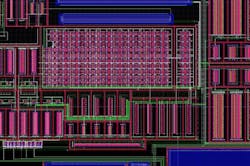Multi-Chip Modules Demand EDA Software With Integrated Design Flow
This file type includes high resolution graphics and schematics when applicable.
Multichip modules (MCMs) are a miniaturized combination of several integrated circuits (ICs), semiconductors, and discrete components, which are unified on a substrate as a single-module component. MCMs are designed to offer superior performance for complex and high-performance systems, such as RF and microwave technologies. MCMs accomplish this enhancement by combining the bias circuitry, filters, passive components, antennas, and interconnects on a common, multi-layered printed-circuit board (PCB). Naturally the benefits of superior performance come with a tradeoff of increased design complexity. In the white paper, “EDA Software Design Flow Considerations for the RF/Microwave Module Designer,” AWR Corp. shares how modern electronic-design-automation (EDA) software could incorporate each integration point in the RF/microwave-module design flow.
Traditionally, each module in an MCM design is given performance specifications that it must meet. In addition, the specifications for the interconnections between these modules are agreed upon by the design team prior to design. This decentralized design flow could lead to challenges as the design of a module is being completed—specifically, when the interactions between the modules cause unspecified behavior like nonlinear loading effects.
A potential solution to these challenges is to incorporate each aspect of the MCM design flow into a single software environment with a unified database. That database, in turn, is synchronized between the different design stages. A benefit of this solution would be the ability to integrate a simulation from the transistor level with the process design kit (PDK) for the IC elements all the way to the other modular components. Additionally, electromagnetic (EM) verification using an EM simulator, optimizations, and yield analysis could be performed on the complete system. This approach would eliminate some existing MCM design challenges, which arise when a variety of software products are used to accomplish these tasks.
AWR suggests that its AWR Microwave Office has these capabilities along with several other enhancement features, such as module-level sub-circuit design systems, automated interconnect routing, simplified metal fills, and module-level in-situ simulations. An example of an integrated MCM design flow of a microwave monolithic integrated circuit (MMIC) using a 2.5-GHz gallium-arsenide (GaAs) power amplifier with a microwave laminate module for output match is provided.
AWR Corp., 1960 E. Grand Ave., Ste. 430, El Segundo, CA 90245.
This file type includes high resolution graphics and schematics when applicable.
About the Author
Jean-Jacques DeLisle
Jean-Jacques graduated from the Rochester Institute of Technology, where he completed his Master of Science in Electrical Engineering. In his studies, Jean-Jacques focused on Control Systems Design, Mixed-Signal IC Design, and RF Design. His research focus was in smart-sensor platform design for RF connector applications for the telecommunications industry. During his research, Jean-Jacques developed a passion for the field of RF/microwaves and expanded his knowledge by doing R&D for the telecommunications industry.

